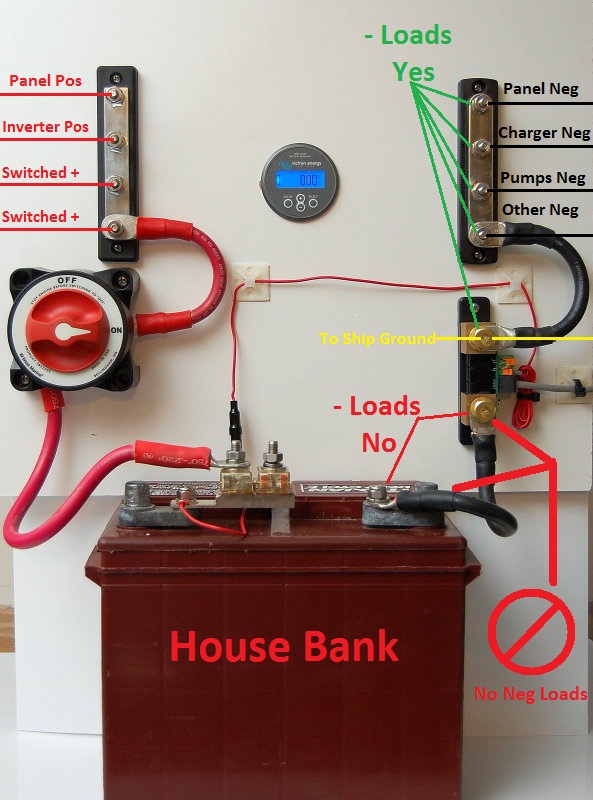- Posts: 26
- Thank you received: 5
Solar panels with battery monitor
- wanderer
-
 Topic Author
Topic Author
- Offline
- Junior Member
-

I am planning on installing two 190 watt solar panels on my IP 35. I have a Link 200 battery monitor connected to a Xantrex 100 amp charger/2000 watt inverter. The manufacturer of the solar (GoPower!) recommends connecting the solar wiring directly to the the batteries. It seems to me that this would bypass the Link 2000, which monitors charging currents and amp hours used and available. My question: is there a way that it can be wired so the Link 2000 recognizes the amount of charge generated by the solar panels and therefore calculates accurate state of charge?
Please Log in or Create an account to join the conversation.
- zenGator
-

- Offline
- Junior Member
-

- Posts: 24
- Thank you received: 8
Additionally, your solar panel(s) should run through a charge controller and not be connected directly to the battery bank. PV panels will produce whatever voltage they produce. That voltage may or may not bee what the batteries need for their current charge state. To grossly oversimplify, your battery (bank) charge cycle will be:
- Bulk: as much current as possible at its current voltage (which increases as charge level increases)
- Absorption: constant voltage of about 14.4v until "fully charged" (when current accepted drops to about 2 amps)
- Float: a maintenance stage where the voltage is kept at about 13.2v.
Please Log in or Create an account to join the conversation.
- wanderer
-
 Topic Author
Topic Author
- Offline
- Junior Member
-

- Posts: 26
- Thank you received: 5
The solar package I am looking at made by Go Power! includes the solar controller.
Please Log in or Create an account to join the conversation.
- zenGator
-

- Offline
- Junior Member
-

- Posts: 24
- Thank you received: 8
Note that you could put the positive on the far (non-battery) side of the large, rotary switch. If you did that, you could move the switch to "OFF" and it would totally isolate the battery. In the illustration the only thing that would be impacting the battery would be the monitor. The batter(ies) wouldn't be receiving a charge though (in the "OFF" position). I don't know why one would want to do that, but some people say they close all their through-hulls when they leave the boat for more than a few hours.
One thing I don't like about that illustration is that it has hidden how the gray cable runs from the shunt to the battery monitor display.
Please Log in or Create an account to join the conversation.
We have 976 guests and 3 members online
Disclaimer
Island Packet and Island Packet Yachts are registered trademarks of IPY (Island Packet Yachts, Inc.). IPYOA and The Island Packet Yacht Owners Association, have no affiliation with IPY, the Island Packet Yacht Company. Throughout our IPYOA Facebook Group and on this IPYOA.com website the terms Island Packet and Island Packet Yachts are used for identification purposes only. This use is FAIR USE and NOMINATIVE. We are NOT a yacht manufacturer we are a yacht owners group.
Sincerely,
The International IPYOA administration team.

